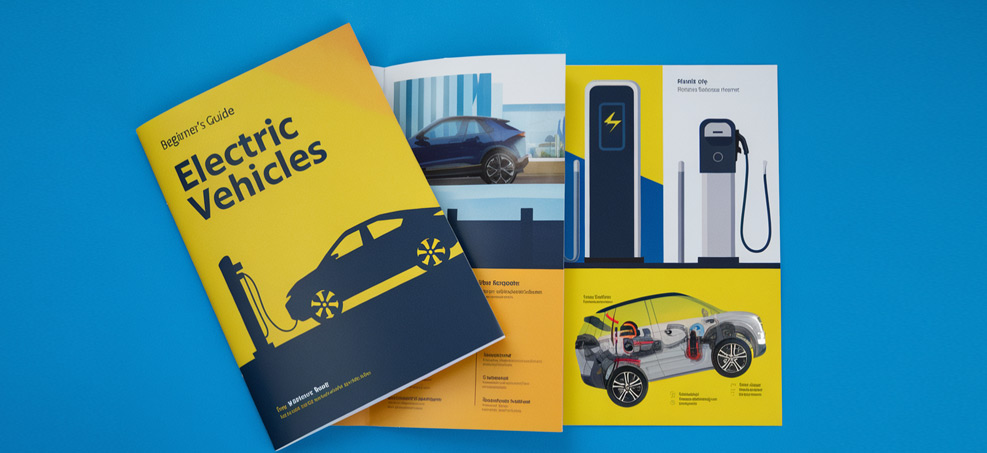Start your EV journey with our beginner’s guide to electric cars and the essentials you need to know.
Stepping into the world of electric vehicles (EVs) can feel like navigating uncharted territory, but the good news is that it’s simpler than it seems. With the rise of sustainable driving, lower operating costs, and sleek new models hitting the market, EVs are quickly becoming the go-to option for drivers looking to reduce their carbon footprint without sacrificing performance.
If you’re curious about making the switch, this beginner’s guide will walk you through the essentials of EVs and what you need to know before joining the electric revolution.
What Exactly Is an Electric Vehicle?
At its core, an electric vehicle runs on electricity rather than gasoline. Unlike traditional cars with internal combustion engines, EVs use an electric motor powered by a rechargeable battery. You’ll typically charge your EV at home or at a public charging station, much like you would a smartphone. Depending on the model, charging times and battery ranges vary, but today’s EVs offer practical driving distances, making them perfect for daily commuting and even road trips.
There are two main types of electric vehicles:
- Battery Electric Vehicles (BEVs): These are fully electric, meaning they run solely on electricity and produce zero emissions.
- Plug-in Hybrid Electric Vehicles (PHEVs): These combine a battery-powered motor with a traditional gas engine, giving you the flexibility to switch between electricity and gasoline when needed.
Charging 101: How Do You Power Up?
Charging an EV is as easy as plugging it in, but knowing the different charging options is crucial. There are three levels of charging:
- Level 1: This is the standard 120-volt outlet, similar to what you use for household appliances. It’s the slowest option, taking several hours or overnight to fully charge your vehicle, making it suitable for home use.
- Level 2: Offering 240 volts, this type of charger is commonly found in homes with a dedicated charging station or at public places like shopping centers. It charges faster than Level 1 and is ideal for most daily needs.
- Level 3 (DC Fast Charging): These high-speed chargers are available at commercial charging stations and can charge an EV to 80% in as little as 30 minutes. Perfect for long road trips when you need a quick boost.
How Far Can You Go? (Range Anxiety Explained)
One of the biggest concerns for new EV drivers is range anxiety, or the fear of running out of battery charge. However, modern electric cars now offer ranges from 200 to over 300 miles on a single charge, making them more than capable of handling daily commutes and longer drives. EV manufacturers continue to improve battery technology, which means even greater ranges and faster charging in the near future.
Benefits of Going Electric
Besides reducing emissions, there are plenty of other perks to owning an electric vehicle:
- Lower Operating Costs: Electricity is cheaper than gasoline, and EVs generally have fewer moving parts, leading to lower maintenance costs (no oil changes, for example).
- Tax Incentives: Many EV buyers in the U.S. are eligible for federal tax credits, and some states offer additional rebates to make switching even more affordable.
- Quiet and Smooth Ride: EVs are known for their silent operation and smooth acceleration, offering a more refined driving experience.
What Should You Consider Before Buying?
If you’re thinking about purchasing an electric vehicle, here are a few key factors to consider:
- Driving Needs: Assess your daily driving habits. If you frequently travel long distances, you’ll want an EV with a higher range or access to plenty of fast-charging stations.
- Charging Infrastructure: If you can install a home charging station, you’ll have the convenience of overnight charging. Check for public charging stations in your area, especially if you live in an apartment or condo.
- Budget and Incentives: While EVs tend to have a higher upfront cost, federal and state incentives can offset the price. Plus, the long-term savings in fuel and maintenance are significant.
Conclusion: A Bright Future on the Road Ahead
Electric vehicles are no longer the cars of the future—they’re here now, offering an eco-friendly, cost-effective alternative to gas-powered cars. Whether you’re drawn to the environmental benefits, the sleek new designs, or the quiet, efficient ride, making the switch to an EV can be a smart move. As charging infrastructure grows and battery technology improves, driving electric will only get easier, making it an ideal time to plug into the EV revolution.


